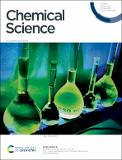Files in this item
ThX-a next-generation probe for the early detection of amyloid aggregates
Item metadata
| dc.contributor.author | Needham, Lisa Maria | |
| dc.contributor.author | Weber, Judith | |
| dc.contributor.author | Varela, Juan A. | |
| dc.contributor.author | Fyfe, James W.B. | |
| dc.contributor.author | Do, Dung T. | |
| dc.contributor.author | Xu, Catherine K. | |
| dc.contributor.author | Tutton, Luke | |
| dc.contributor.author | Cliffe, Rachel | |
| dc.contributor.author | Keenlyside, Benjamin | |
| dc.contributor.author | Klenerman, David | |
| dc.contributor.author | Dobson, Christopher M. | |
| dc.contributor.author | Hunter, Christopher A. | |
| dc.contributor.author | Müller, Karin H. | |
| dc.contributor.author | O'Holleran, Kevin | |
| dc.contributor.author | Bohndiek, Sarah E. | |
| dc.contributor.author | Snaddon, Thomas N. | |
| dc.contributor.author | Lee, Steven F. | |
| dc.date.accessioned | 2020-06-30T11:30:03Z | |
| dc.date.available | 2020-06-30T11:30:03Z | |
| dc.date.issued | 2020-05-14 | |
| dc.identifier | 268723851 | |
| dc.identifier | 022a003a-f3cf-4cf2-8200-155726cbc5fe | |
| dc.identifier | 85086014337 | |
| dc.identifier | 000535674600027 | |
| dc.identifier.citation | Needham , L M , Weber , J , Varela , J A , Fyfe , J W B , Do , D T , Xu , C K , Tutton , L , Cliffe , R , Keenlyside , B , Klenerman , D , Dobson , C M , Hunter , C A , Müller , K H , O'Holleran , K , Bohndiek , S E , Snaddon , T N & Lee , S F 2020 , ' ThX-a next-generation probe for the early detection of amyloid aggregates ' , Chemical Science , vol. 11 , no. 18 , pp. 4578-4583 . https://doi.org/10.1039/c9sc04730a | en |
| dc.identifier.issn | 2041-6520 | |
| dc.identifier.other | ORCID: /0000-0003-1901-1378/work/76779248 | |
| dc.identifier.uri | https://hdl.handle.net/10023/20177 | |
| dc.description | Authors thank the Royal Society for the University Research Fellowship of S. F. L. (UF120277). This work was funded in part by the Michael J Fox Foundation and Indiana University. We thank the EPSRC for the Doctoral Prize of L. M. N., J. W, and S. E. B. are funded by Cancer Research UK (C14303/A17197, C47594/A16267), the EPSRC-CRUK Cancer Imaging Centre in Cambridge and Manchester (C197/A16465) and the European Union's Seventh Framework Programme (FP7-PEOPLE-2013- CIG-630729). We thank the European Reseach council for the Starting Grant of J.A.V. (804581). | en |
| dc.description.abstract | Neurodegenerative diseases such as Alzheimer's and Parkinson's are associated with protein misfolding and aggregation. Recent studies suggest that the small, rare and heterogeneous oligomeric species, formed early on in the aggregation process, may be a source of cytotoxicity. Thioflavin T (ThT) is currently the gold-standard fluorescent probe for the study of amyloid proteins and aggregation processes. However, the poor photophysical and binding properties of ThT impairs the study of oligomers. To overcome this challenge, we have designed Thioflavin X, (ThX), a next-generation fluorescent probe which displays superior properties; including a 5-fold increase in brightness and 7-fold increase in binding affinity to amyloidogenic proteins. As an extrinsic dye, this can be used to study unique structural amyloid features both in bulk and on a single-aggregate level. Furthermore, ThX can be used as a super-resolution imaging probe in single-molecule localisation microscopy. Finally, the improved optical properties (extinction coefficient, quantum yield and brightness) of ThX can be used to monitor structural differences in oligomeric species, not observed via traditional ThT imaging. | |
| dc.format.extent | 6 | |
| dc.format.extent | 1117545 | |
| dc.language.iso | eng | |
| dc.relation.ispartof | Chemical Science | en |
| dc.subject | QD Chemistry | en |
| dc.subject | Chemistry(all) | en |
| dc.subject | DAS | en |
| dc.subject.lcc | QD | en |
| dc.title | ThX-a next-generation probe for the early detection of amyloid aggregates | en |
| dc.type | Journal article | en |
| dc.contributor.institution | University of St Andrews. School of Biology | en |
| dc.contributor.institution | University of St Andrews. Centre for Biophotonics | en |
| dc.contributor.institution | University of St Andrews. School of Chemistry | en |
| dc.identifier.doi | 10.1039/c9sc04730a | |
| dc.description.status | Peer reviewed | en |
This item appears in the following Collection(s)
Items in the St Andrews Research Repository are protected by copyright, with all rights reserved, unless otherwise indicated.

